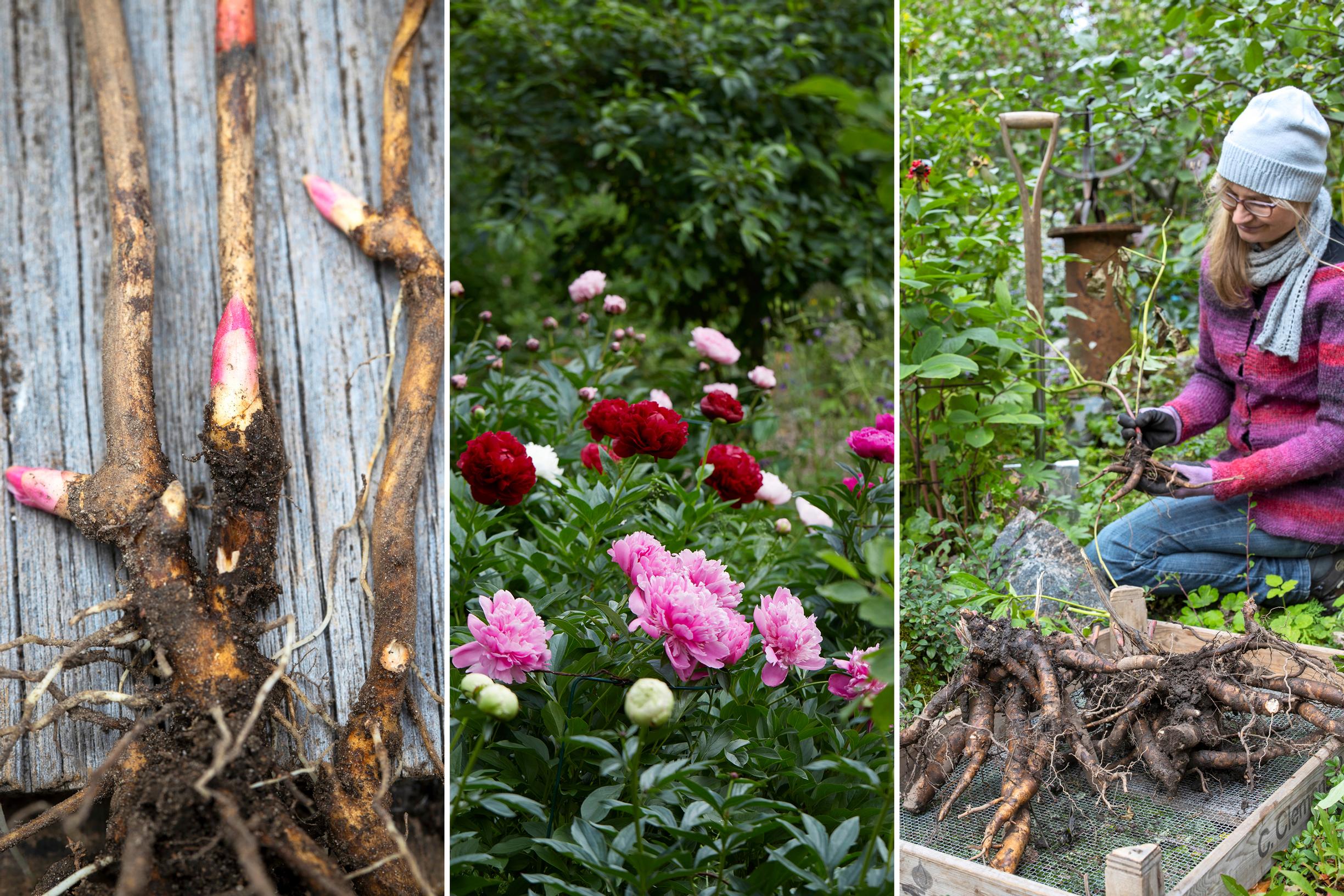
Time to divide your peony? Do it right this fall—check out our illustrated instructions!
Dividing and relocating a peony is best done in early fall. A peony transplanted in the fall can often bloom as soon as the next summer. In contrast, a peony that is moved or divided in spring or summer may take years to recover. Still, there’s no obligation to divide—peonies can thrive in the same place for decades.
Dividing and moving a peony in the fall aligns with the plant’s growth cycle and conserves its energy. In summer, a peony produces few new feeder roots, so it depends on the reserves in its thick root system. As a result, a peony that is moved and divided in spring or summer may require several years to recover.
How to divide a peony
Transplant and divide a Chinese peony in the fall, when the plant is preparing for dormancy and its foliage is turning autumnal. If done at the right time, the plant will begin forming feeder roots in fall and often blooms the following year.
September is also a good time to take a peony division without lifting the entire rootstock. If you want a side division, slice it off at the edge of the rootstock with a shovel. If you plan to lift the whole plant, cut the rootstock into pieces (see photos below).
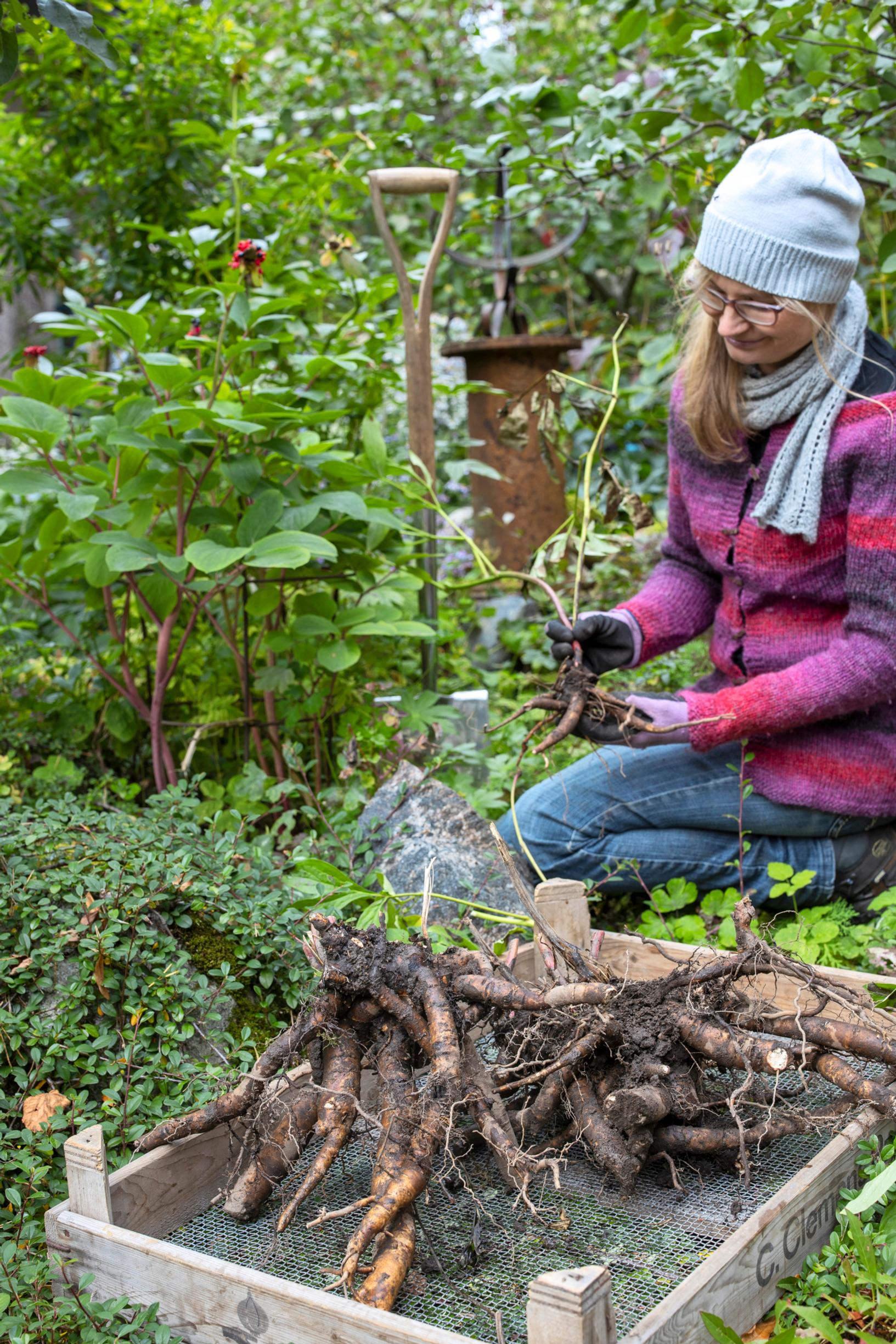
Don’t rush to divide a peony—this perennial can flourish in the same spot for decades.
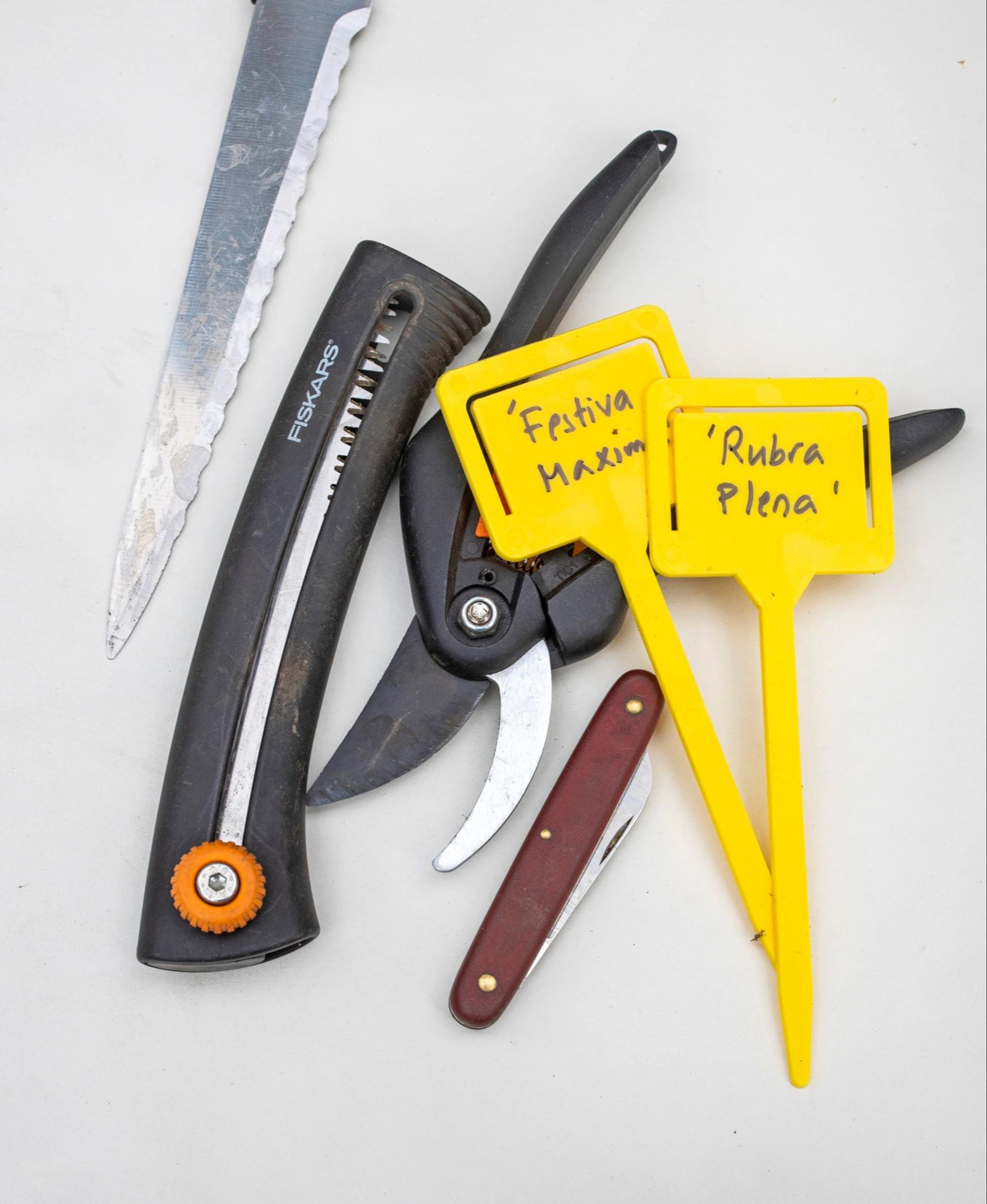
Remove the soil from the peony’s rootstock before dividing so you can see its structure and form neat sections. Often, a tight, tangled rootstock is easiest to clean by rinsing with water. Removing damaged roots also makes dividing easier. Alternatively, you can gently scrape away the soil with a thin wooden stick.
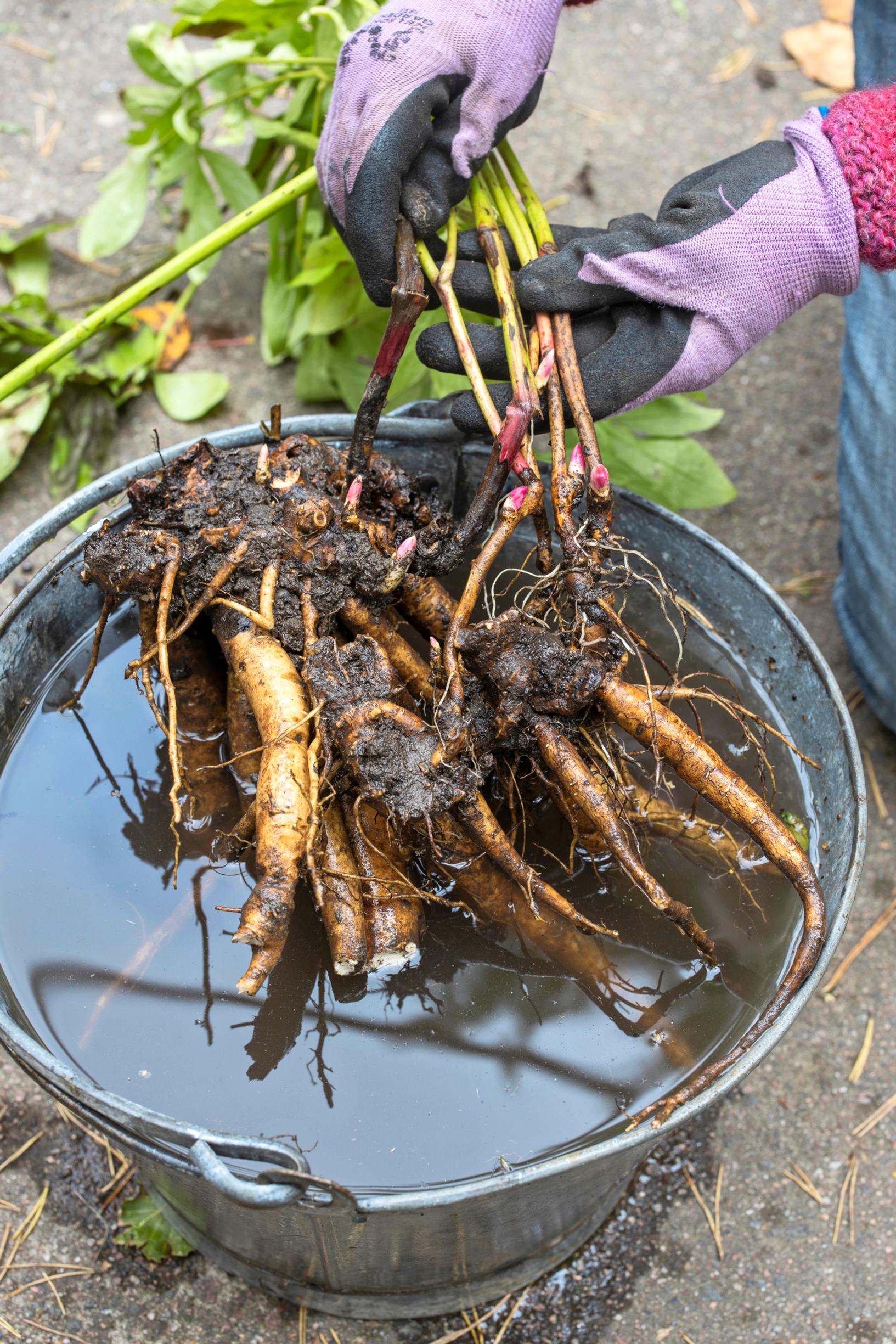
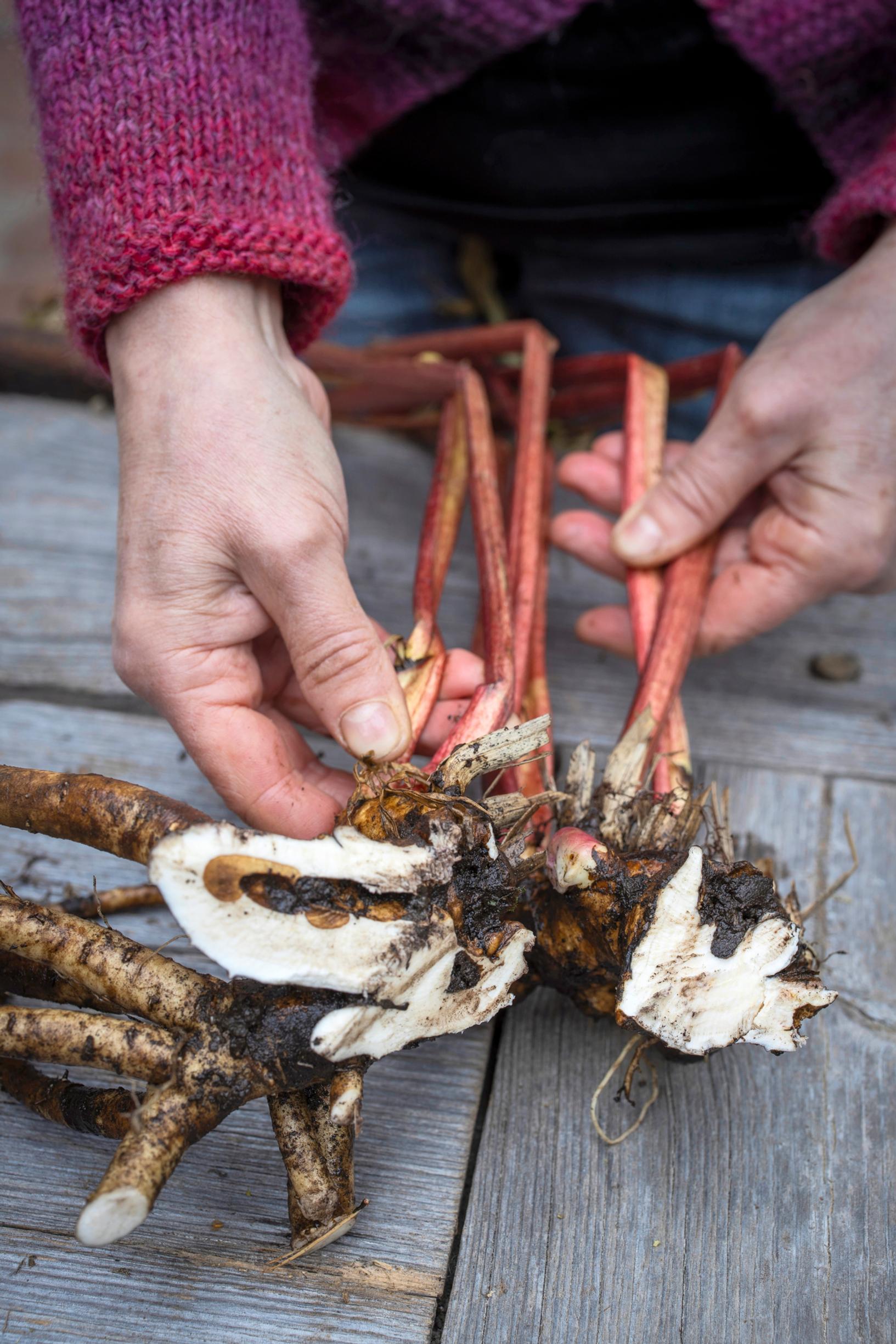
Cut the rootstock into sausage-shaped segments, each containing at least 20 cm (8 in) of thick storage root, a few buds, and only a few cut surfaces. If you want numerous new plants, you can also plant single-bud, shorter pieces of root so they can strengthen in the soil.
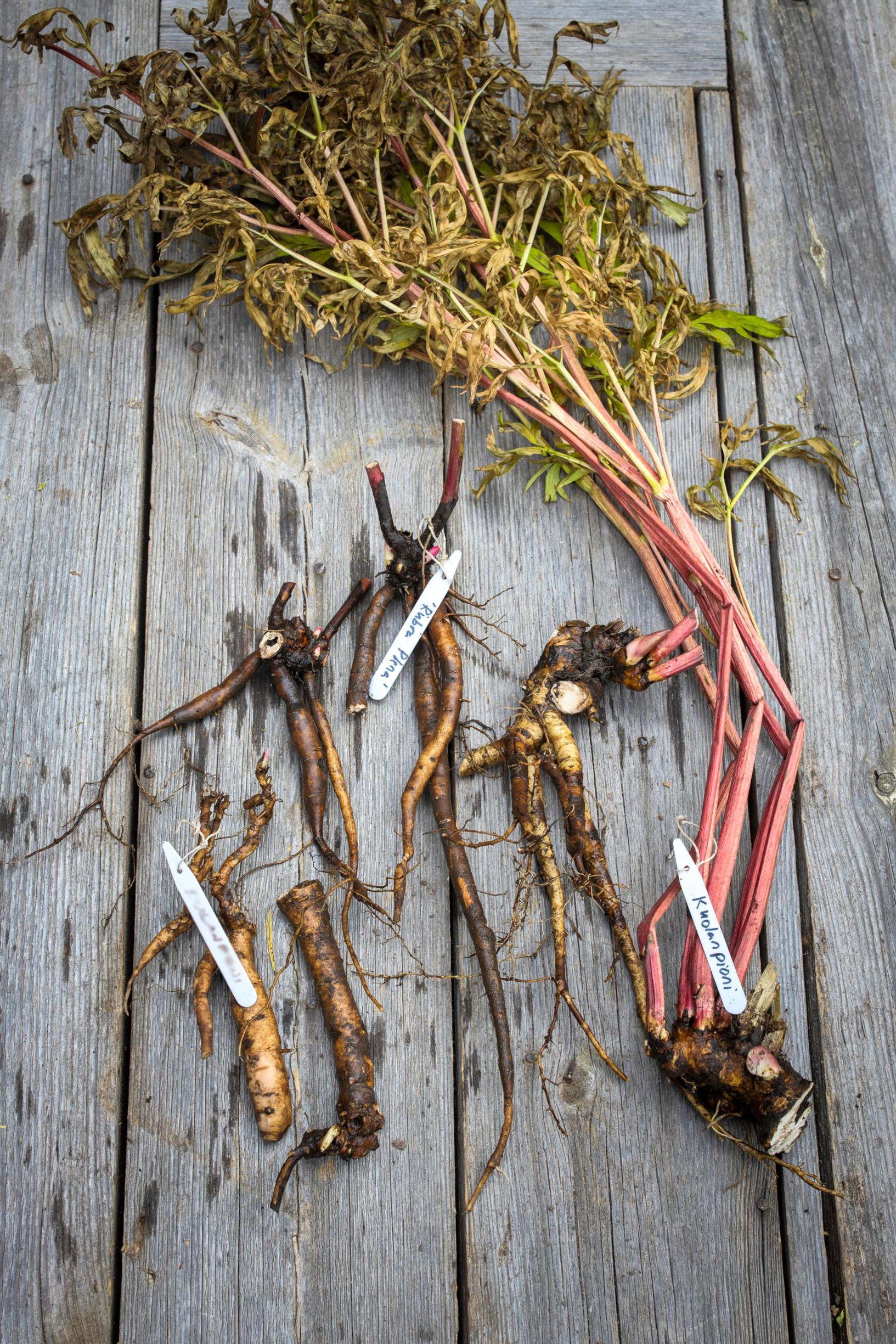
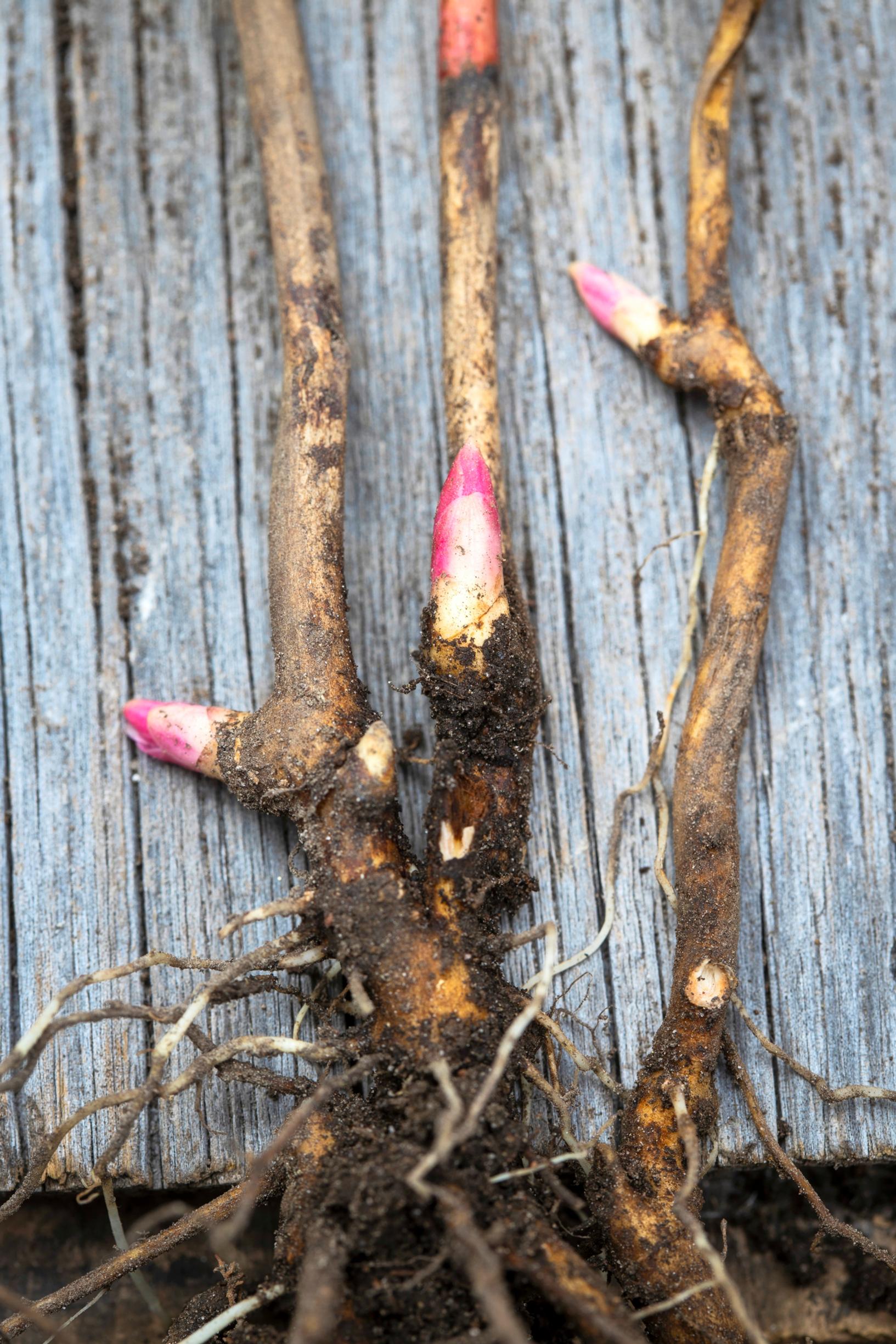
Plant the divided sections in a raised bed with soil that drains well. Peonies have fleshy storage roots that endure dryness better than waterlogged conditions. Improve clay soil with coarse sand instead of peat, as peat retains water and can increase winter damage risks.
If you’re planting a group of peonies, place a manure layer about 30–40 cm (12–16 in) deep in the bed. This nourishment will sustain them for years with no extra fertilizer. Horn shavings and bone meal are also excellent for a peony’s base fertilization. Avoid adding lime unless truly necessary, as a high pH can restrict nutrient absorption. The ideal pH is 6–6.5.
Cover the peony’s rootstock so that its buds are 3–5 cm (1–2 in) below the soil. Although the soil may be moist, water the area thoroughly after planting to settle it around the rootstock. Then check that the buds are at the correct depth and add soil if needed.


